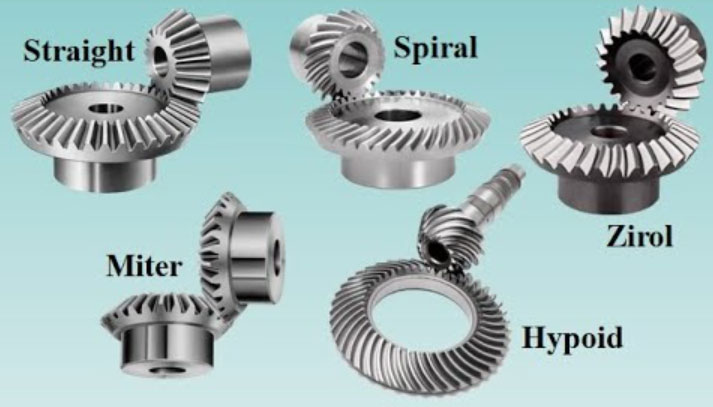The future of bevel gears is expected to involve several advancements and innovations driven by the evolving needs of various industries. Here are some predictions and potential innovations that could shape the future of bevel gears:

- Advanced Materials: The development of new materials or the refinement of existing materials will continue to enhance the performance of bevel gears. The use of advanced alloys, composites, and surface coatings can improve strength, durability, wear resistance, and reduce friction. Materials with improved heat resistance and corrosion resistance properties will also find applications in high-temperature or harsh environments.
- Enhanced Gear Design: Advancements in computer-aided design (CAD) and simulation techniques will enable more accurate and efficient bevel gear designs. Optimization algorithms and virtual testing will allow engineers to explore a broader range of gear geometries, tooth profiles, and configurations to maximize efficiency, load-carrying capacity, and minimize noise and vibration. This may lead to the development of unconventional tooth profiles or non-traditional gear designs tailored to specific applications.
- 3D Printing and Additive Manufacturing: Additive manufacturing, such as 3D printing, holds the potential to revolutionize the production of bevel gears. This technology allows for the creation of complex geometries, customization, and rapid prototyping. It can also facilitate the integration of internal features, such as lightweighting structures or lubrication channels, improving gear performance and efficiency.
- Smart and Sensor-Enabled Gears: Integration of sensors and smart technologies into bevel gears will enable real-time monitoring of gear performance, condition, and predictive maintenance. Sensors can provide data on factors such as temperature, vibration, and load distribution, allowing for early detection of potential failures and optimizing maintenance schedules. This will enhance reliability, reduce downtime, and improve overall system efficiency.
- Noise Reduction and Efficiency Improvement: Continued research and development efforts will focus on reducing noise and increasing the efficiency of bevel gears. Advanced tooth profile optimization, surface treatments, and noise reduction techniques will be employed to minimize gear noise, vibration, and power losses. The use of advanced lubrication systems and coatings will further enhance gear efficiency and reduce friction losses.
- Miniaturization and Micro-Gearing: As industries demand smaller and more compact systems, bevel gears will need to adapt to miniaturization requirements. Innovations in micro-gearing technology will enable the production of tiny bevel gears for applications such as micro-robotics, medical devices, and microelectromechanical systems (MEMS). These miniature gears will require high precision and advanced manufacturing techniques.
- Industry-Specific Innovations: Different industries, such as automotive, aerospace, robotics, and renewable energy, will drive specific innovations in bevel gears. For example, in the automotive sector, the development of electric vehicles (EVs) and hybrid vehicles will create demand for lightweight, high-efficiency bevel gears to transmit power between electric motors and wheels. In aerospace, bevel gears with high strength-to-weight ratios and reduced noise will be essential for aircraft applications.
Overall, the future of bevel gears will witness a combination of advancements in materials, design techniques, manufacturing processes, and smart technologies. These innovations will result in improved performance, efficiency, reliability, and customization capabilities, enabling bevel gears to meet the evolving needs of various industries and applications.
